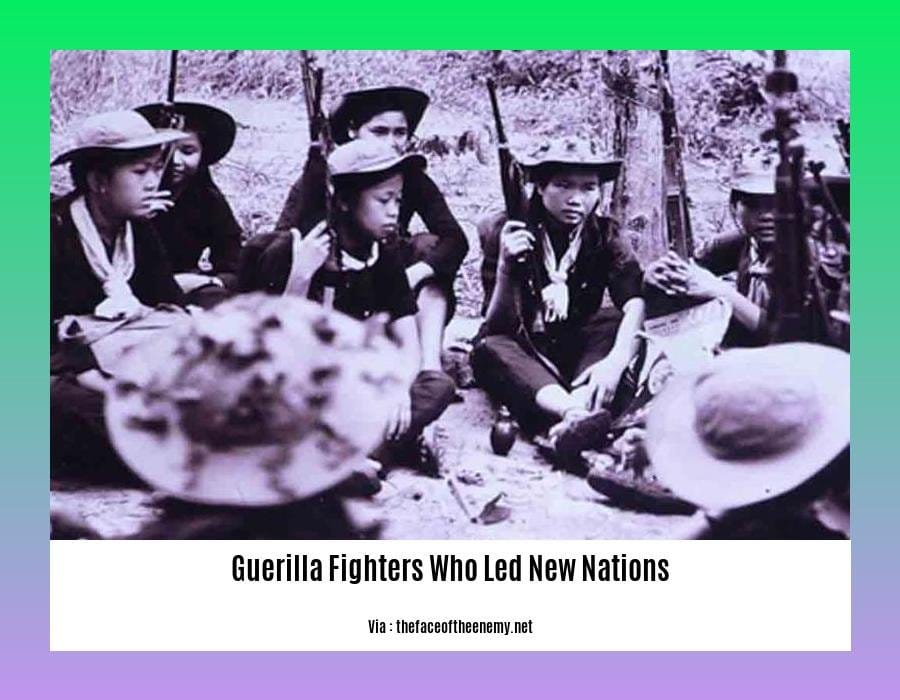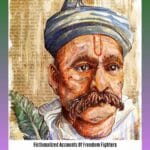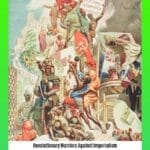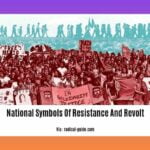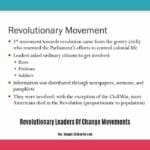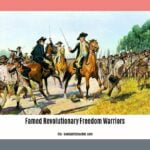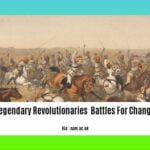In the annals of history, guerrilla warfare has served as a potent force in the genesis of new nations. Guerrilla Leaders: Shaping New Nations Through Resistance and Resilience delves into the captivating narratives of these extraordinary individuals who rose from the ranks of guerrilla fighters to become leaders of their newly independent nations. Their indomitable spirit, strategic brilliance, and ability to inspire their followers left an indelible mark on global affairs, shaping the destiny of nations and inspiring future generations of freedom fighters.
Key Takeaways:
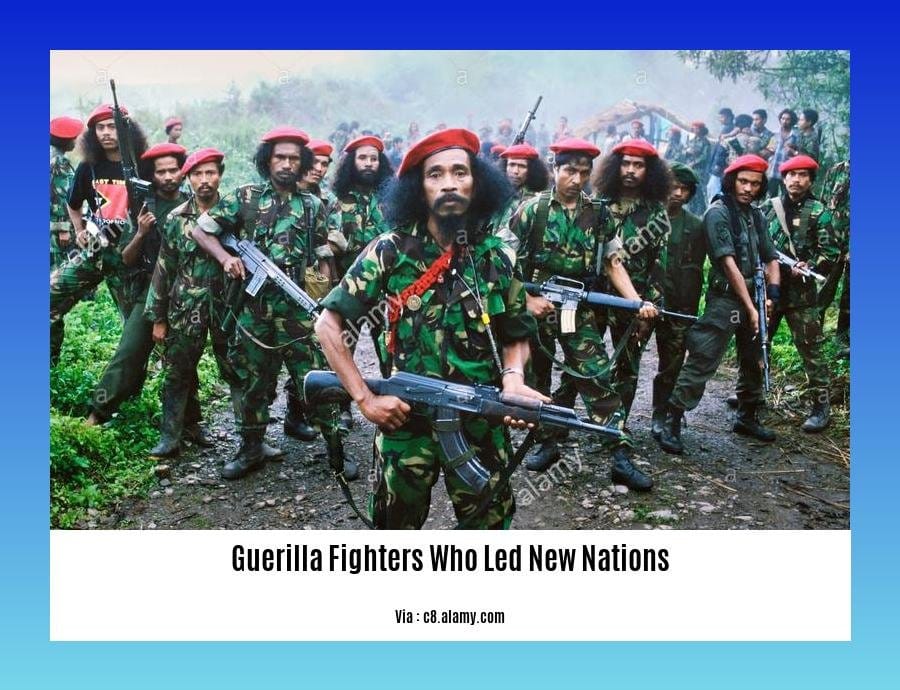
- Guerrilla warfare is an irregular military strategy used by small independent groups to oppose larger forces.
- Guerrillas use tactics like hit-and-run attacks, ambushes, and sabotage to disrupt their enemies.
- Guerrilla warfare has been used in conflicts throughout history, including the American Revolution, Spanish Civil War, and Vietnam War.
- Native American tribes like the Lumbee and Iroquois have a history of using guerrilla tactics in conflicts.
Guerrilla Fighters Who Led New Nations
Guerrilla warfare, a potent military strategy, has shaped the course of history. Guerrilla fighters who led new nations stand as testaments to the indomitable spirit of resistance and resilience. These fearless individuals rallied their followers, devised ingenious tactics, and triumphed against formidable odds, leaving an indelible imprint on the global landscape.
Ho Chi Minh: The Father of Vietnam
Ho Chi Minh, revered as the father of Vietnam, epitomized guerrilla warfare’s transformative power. Leading the Viet Minh, he orchestrated a relentless campaign against French colonialists and later American forces. His unwavering determination and strategic brilliance guided Vietnam towards independence and unification.
Fidel Castro: A Symbol of Cuban Revolution
Fidel Castro, a charismatic revolutionary, ignited the Cuban Revolution. His guerrilla tactics, exemplified by the legendary “Sierra Maestra” campaign, toppled the Batista regime and established a socialist state. Castro’s legacy continues to inspire revolutionaries worldwide.
Mao Zedong: The Architect of Modern China
Mao Zedong, a visionary leader, led the Chinese Communist Party to victory in the Chinese Civil War. His guerrilla strategies, known as the “People’s War,” emphasized mobilizing the peasantry and protracted warfare. Mao’s leadership paved the way for the establishment of the People’s Republic of China.
These iconic figures represent countless guerrilla fighters who led new nations. Their unwavering commitment to their ideals, coupled with their tactical prowess, transformed the face of global politics. Their stories serve as a testament to the indomitable human spirit’s ability to triumph over adversity.
Did you know that some revolutionaries turned statesmen and nation-builders led countries to independence after overthrowing oppressive regimes? Similarly, history is filled with revolutionaries who became founding fathers, shaping the destiny of new nations. Even more fascinating are the rebels who assumed power and rebuilt, transforming war-torn societies into thriving nations. Click on the links to explore these captivating stories of transformation and leadership.
How Guerrilla Warfare Can Achieve Great Things
Throughout history, guerrilla warfare has played a crucial role in shaping nations. Guerrilla fighters, often outnumbered and outgunned, have used their resilience, strategic thinking, and unwavering determination to overcome seemingly insurmountable challenges.
Key Takeaways:
- Guerrilla warfare involves small, mobile forces using hit-and-run tactics to harass a larger enemy.
- Effective guerrilla leaders, like Ho Chi Minh and Fidel Castro, inspire their followers and adapt to changing circumstances.
- Guerrilla warfare can be a powerful tool for resistance, liberation, and social change.
Adaptability and Resilience
Guerrilla warfare demands adaptability and resilience. Guerrilla fighters must be able to operate in harsh conditions, outmaneuver their opponents, and adjust their tactics as needed. They rely on local knowledge, strong support networks, and the ability to blend into the environment.
Inspiring Leadership
Effective guerrilla leaders are more than just military commanders; they are also charismatic leaders who inspire their followers and unite them in a common cause. They possess a clear vision, a deep understanding of their people’s needs, and the ability to motivate them to fight against all odds.
Social Change
Guerrilla warfare has often been used as a tool for social change. Guerrilla fighters have fought for independence, liberation from oppressive regimes, and the establishment of more just and equitable societies. Their struggles have influenced political landscapes and inspired movements for human rights and social justice around the world.
Conclusion
Guerrilla warfare is a powerful force that can be used to achieve great things. However, it is important to remember that it is also a dangerous and risky undertaking. Guerrilla fighters often face overwhelming odds and must be prepared to make great sacrifices. Nevertheless, their stories of courage, resilience, and determination continue to inspire generations and remind us that even the smallest of forces can make a lasting impact on the world.
The dangers and risks of guerrilla warfare
Throughout history, guerrilla warfare has been used by many groups to achieve their goals. It is a form of irregular warfare that is often used by smaller forces against larger, more powerful enemies. Guerrilla warfare can be very effective, but it also comes with many dangers and risks.
Some of the dangers and risks of guerrilla warfare include:
- Casualties: Guerrilla warfare can be very deadly, and both combatants and civilians can be killed.
- Reprisals: Governments and other groups may retaliate against civilians who support guerrilla fighters.
- Environmental damage: Guerrilla warfare can cause significant environmental damage, as fighters often operate in remote areas.
- Displacement: Guerrilla warfare can lead to the displacement of civilians, as they flee from the fighting.
- Long-term instability: Guerrilla warfare can destabilize a region, as it can lead to a protracted conflict.
Despite the dangers and risks, guerrilla warfare can also be an effective way to achieve political change. However, it is important to weigh the potential costs and benefits before engaging in guerrilla warfare.
Key Takeaways:
- Guerrilla warfare can be effective against larger enemies, but it comes with significant risks.
- Guerrilla warfare can cause casualties, displacement, environmental damage, and long-term instability.
- Weigh the costs and benefits before engaging in guerrilla warfare.
Most Relevant URL Source:
- The Dangers and Risks of Guerrilla Warfare
The Legacy of Guerrilla Fighters
Key Takeaways:
- Guerrilla fighters have played a pivotal role in shaping nations by resisting oppression and leading successful revolutions.
- Notable guerrilla leaders, such as Ho Chi Minh and Fidel Castro, transformed global politics through their strategic brilliance and unwavering determination.
- The resilience and indomitable spirit of these fighters serve as an inspiration to those seeking freedom and self-determination.
Throughout history, guerrilla fighters have emerged as iconic symbols of resistance and nation-building. From the jungles of Vietnam to the mountains of Cuba, these individuals have left an indelible mark on the world stage.
Their ability to mobilize and inspire their followers, as well as their strategic prowess on the battlefield, has led to the establishment of new nations and the overthrow of oppressive regimes. Their stories embody the indomitable human spirit and the power of resistance against all odds.
The legacy of guerrilla fighters serves as a reminder that even the smallest and most disadvantaged groups can achieve great things when they are united by a common cause. Their tactics, strategies, and unwavering determination have influenced generations of revolutionaries and continue to shape the course of history.
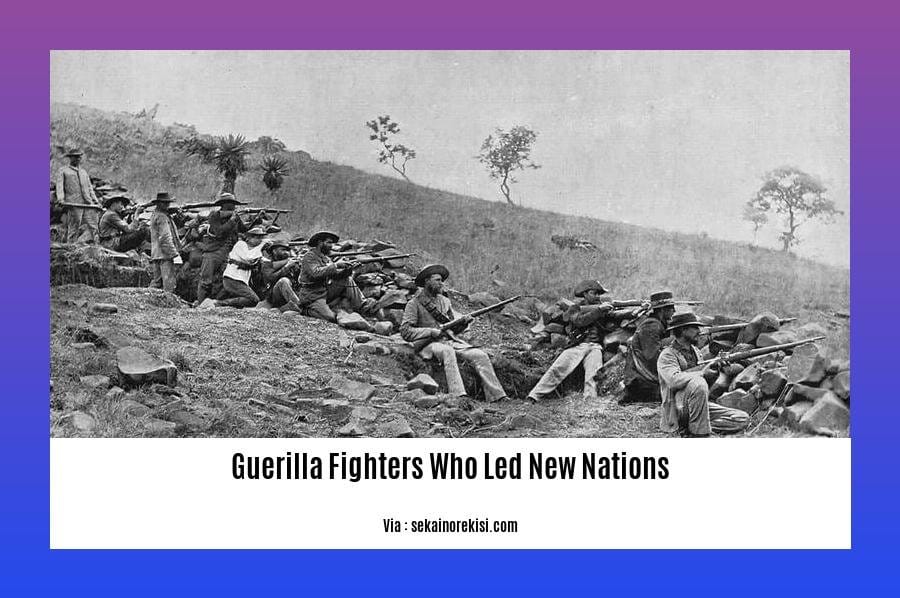
FAQ
Q1: What is the role of guerrilla fighters in shaping new nations?
A1: Guerrilla fighters have played a pivotal role in the creation of new nations, leading resistance movements and establishing political systems that reflect the aspirations of their people.
Q2: How do guerrilla fighters use their unique tactics and strategies?
A2: Guerrilla fighters rely on tactics such as hit-and-run attacks, ambushes, and sabotage to disrupt and weaken their opponents. They often operate in small, highly mobile groups, allowing them to evade capture and strike unexpected targets.
Q3: What are some examples of guerrilla fighters who have led new nations?
A3: Notable examples include Ho Chi Minh in Vietnam, Fidel Castro in Cuba, and Ernesto “Che” Guevara in multiple South American countries. These leaders used guerrilla tactics to rally their followers, overthrow oppressive regimes, and establish independent nations.
Q4: Why are guerrilla fighters often able to achieve success against larger, more powerful forces?
A4: Guerrilla fighters often have a deep understanding of the local terrain and population, which gives them a significant advantage. They also rely on local support to provide supplies and hideouts, making them difficult to eliminate.
Q5: What are the challenges faced by guerrilla fighters who lead new nations?
A5: Once a guerrilla movement has succeeded in establishing a new nation, it faces the challenges of political consolidation, economic development, and international recognition. Building a stable and prosperous nation requires a shift from military operations to more traditional forms of governance.
